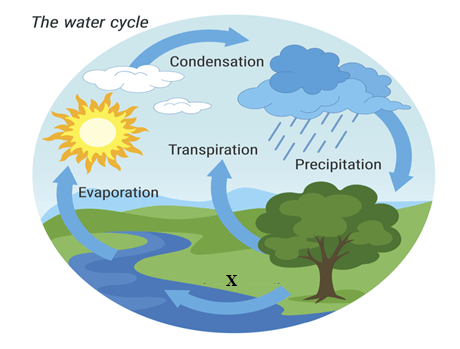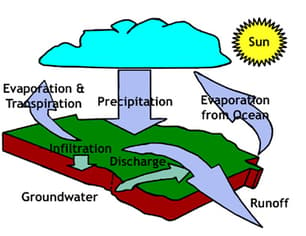Respiration is a process that remove carbon dioxide from atmosphere.
Important Questions on Balance
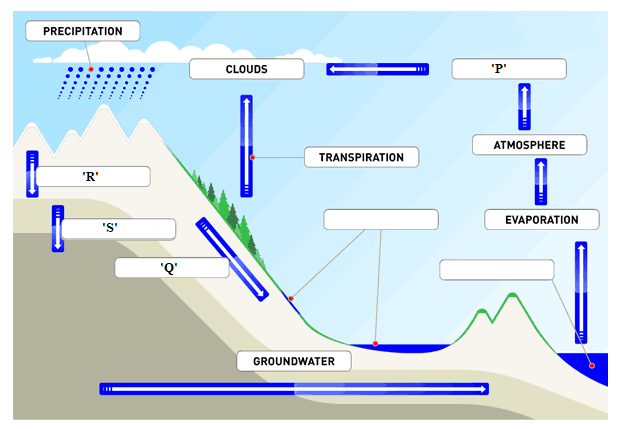
Study the picture above and identify which letter indicates infiltration:
Toxic “red tides”
Suggest factors that could bring the populations of algae back into balance and, for a time at least, end the red tides.
Observe the picture and write down the procedure for the separation of components of a mixture of ammonium chloride and sand.
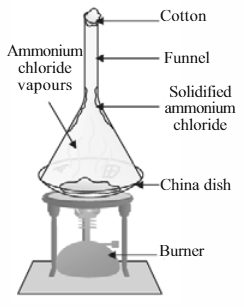
Impact of human activity on water cycle with the help of arrow diagram.
Climate change is expected to alter the water cycle and will subsequently impact water availability and demand.
A few mixtures are given below. Tabulate the methods to separate their components and give the reasons for selecting the method.
| Mixture | Method | Reason |
| Common salt and ammonium chloride | ||
| Sugar solution | ||
| Petrol and kerosene | ||
| Camphor and glass powder | ||
| Iron powder and sand |
Infiltration is the movement of water through the soil itself.
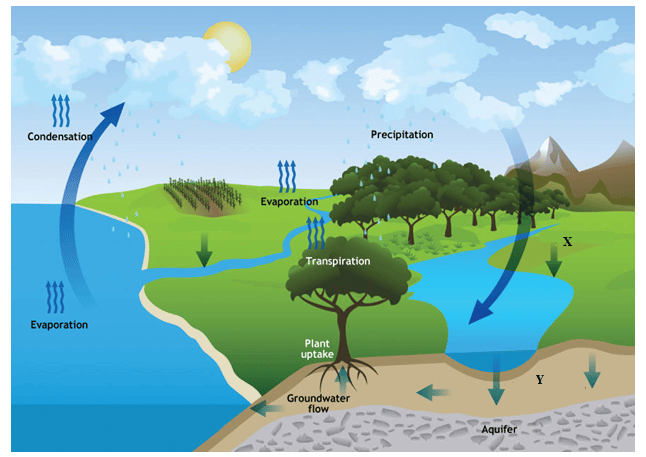
Study the above picture and find the correct matching pair:
Toxic “red tides”
The algae produced a virulent neurotoxin that killed molluscs and fish and posed a threat to human health if seafood containing it was consumed. An estimated 27 million salmon in salmon farms were killed either by increased water temperatures or by the neurotoxin. Some of these dead salmon were dumped at sea. On one part of the Chilean coast, 40,000 tonnes of sardines were washed up dead and at another site, 337 sei whales (Balaenoptera borealis) were washed up in one of the biggest strandings in history. The red tides coincided with a powerful El Niño event, which warmed water off the Chilean coast by several degrees. Populations of algae are always present in ocean water and for much of the time they stay in balance.
Suggest reasons for the populations in the water off the coast of Chile becoming unbalanced.
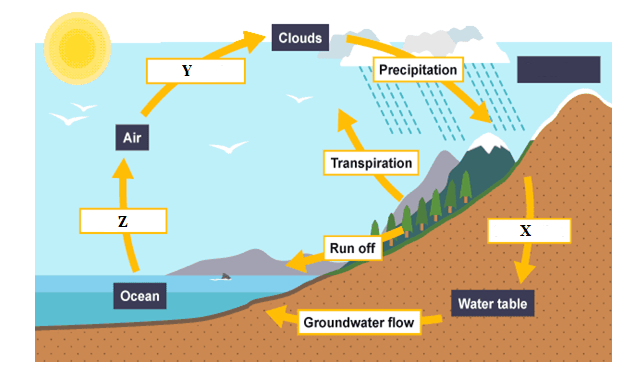
Study the above picture and identify the letter which represents percolation:
Give the examples for the substance except iodine that changes directly into gas on heating without changing into liquid.
Human activities have affected carbon cycle.


